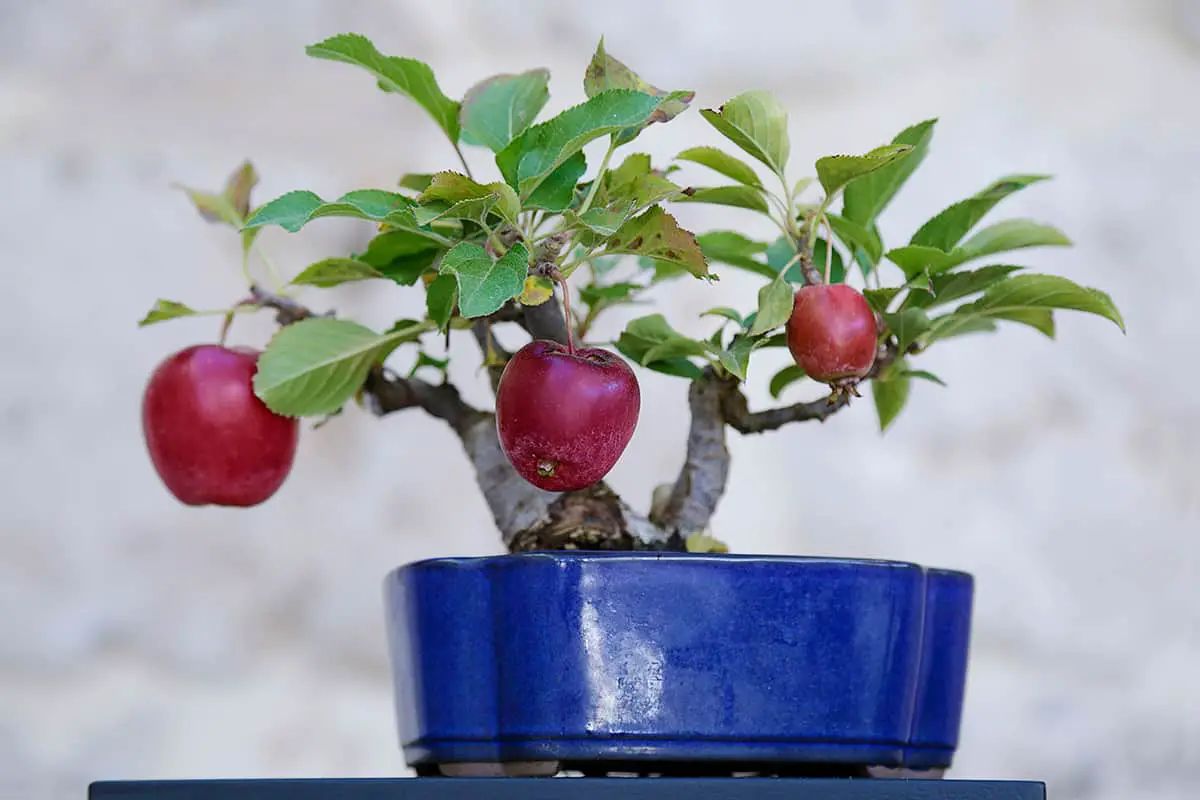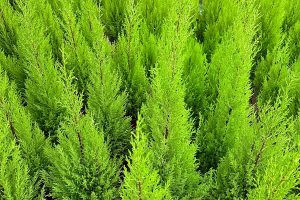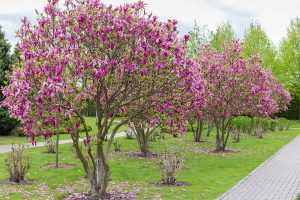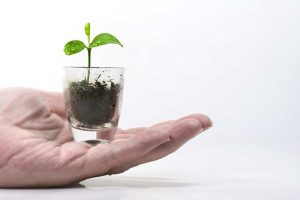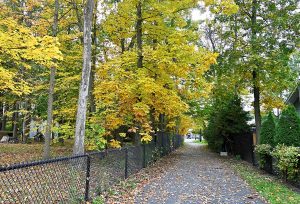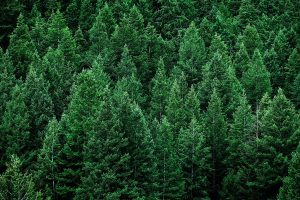Living without a garden doesn’t mean you have to forgo the pleasure of harvesting your own apples. By growing apple trees in pots, you can enjoy the freshness of home-grown fruit from the comfort of your balcony or patio. This method not only conserves space but also allows for greater control over the growing conditions of your apple tree.
In this guide, we’ll provide detailed instructions on how to select the right tree variety, choose an appropriate container, and care for your potted apple tree, ensuring a lush, fruitful bounty.
Table of Contents
- Choosing the Right Apple Tree Variety
- Selecting the Right Pot
- Potting Soil and Fertilization
- Planting the Apple Tree
- Watering and Humidity
- Sunlight and Temperature Control
- Pruning and Maintenance
- Pollination Tips
- Harvesting and Storing Apples
- Frequently Asked Questions
- Which types of apple trees are most suitable for pot cultivation indoors?
- How should one feed and fertilize apple trees grown in pots?
- How can potted apple trees be protected and cared for during winter months?
- After planting, how long does it generally take for an apple tree in a pot to start bearing fruit?
Choosing the Right Apple Tree Variety
Dwarf vs. Semi-Dwarf Varieties
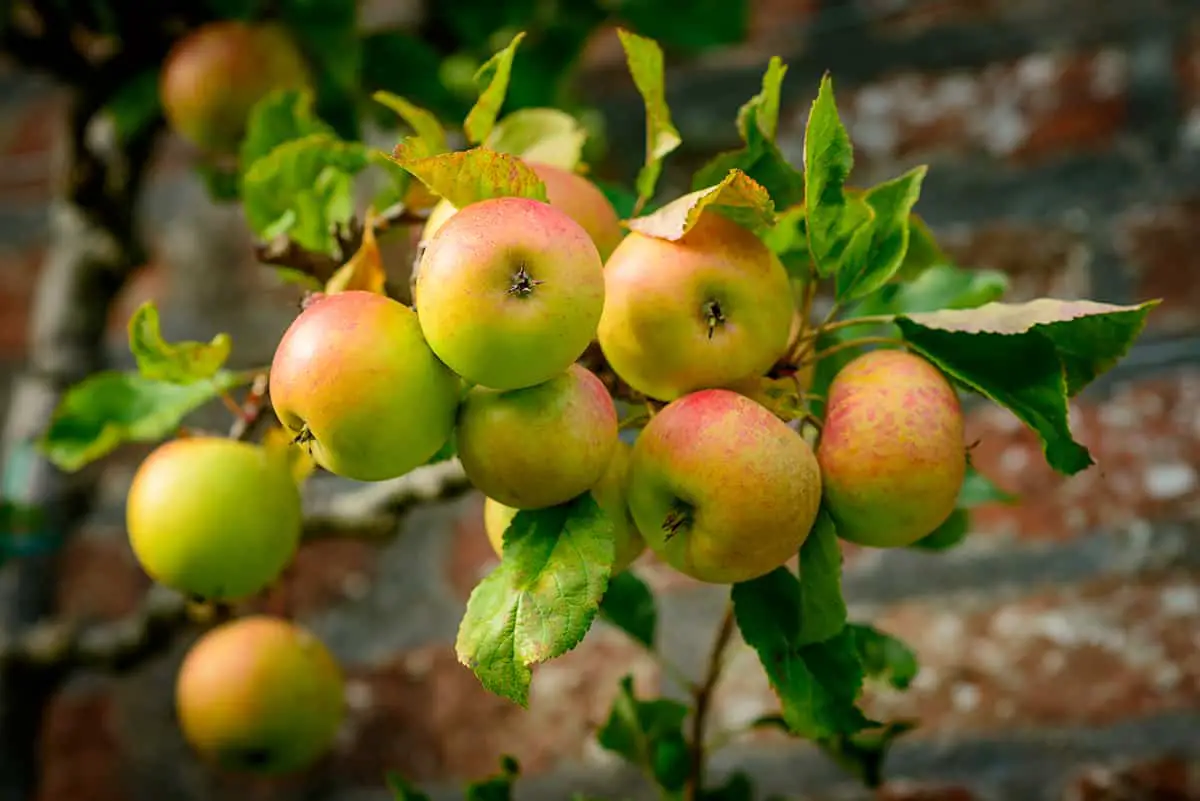
When selecting an apple tree for growing in a pot, it’s important to choose a dwarf or semi-dwarf variety. Dwarf apple trees are smaller than their full-sized counterparts and are easier to train, prune, and maintain. This makes them a great choice for pot cultivation. Semi-dwarf apple trees, while slightly larger than dwarf varieties, can still be suitable for growing in pots with proper care and pruning.
Note: Dwarf apple tree varieties reach 8-10 feet at maturity, and semi-dwarf varieties reach 12-15 feet.
Climate and Zone Considerations
It’s essential to consider your region’s climate and growing zone when selecting an apple tree variety. Apple trees need at least 8 hours of sun per day, so ensure that your chosen location can provide adequate sunlight. Additionally, research the cold hardiness of your selected apple tree variety to ensure it’s compatible with your area’s climate. You can find your growing zone by consulting the USDA Plant Hardiness Zone Map.
To help you pick, here’s a table of common dwarf and semi-dwarf apple tree varieties along with their climate suitability:
| Apple Variety | Climate | Hardiness Zones |
|---|---|---|
| Gala | Mild | 5-8 |
| Fuji | Mild | 6-9 |
| Granny Smith | Mild | 6-9 |
| Honeycrisp | Cold | 3-6 |
| Golden Delicious | Cold | 3-7 |
By following these guidelines and choosing a suitable apple tree variety for your specific needs and location, you can successfully grow apple trees in pots and enjoy a bountiful harvest.
Selecting the Right Pot
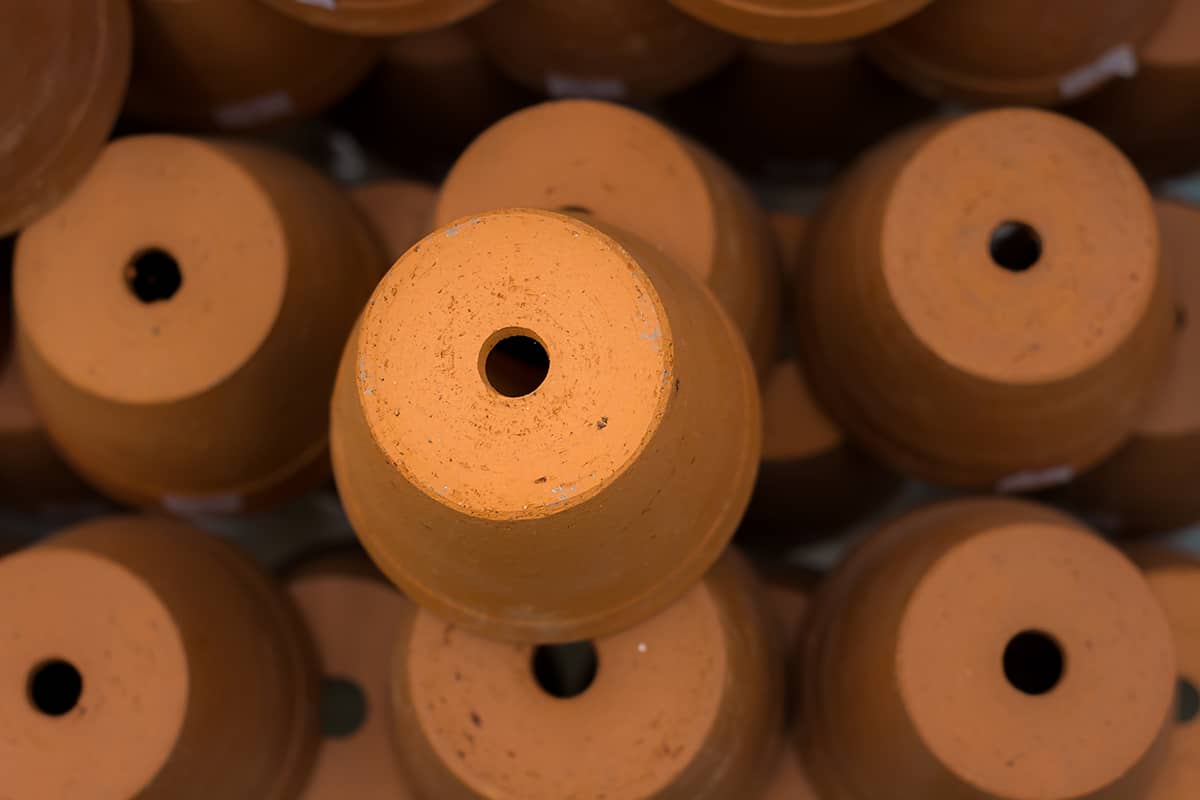
Pot Size Requirements
To grow an apple tree in a pot, it’s essential to select the appropriate pot size. For compact fruit trees, an 8-inch-wide container is suitable for a couple of years. As the tree grows, it will require a larger container. Remember that a more spacious pot is heavier and more challenging to move.
Material and Drainage Considerations
When choosing a pot for your apple tree, consider the material. Terra cotta, stone, and ceramic pots are durable but heavy. Alternatively, plastic, polystyrene, and other modern composite materials are lighter, making them easier to move and handle.
Proper drainage is crucial for growing apple trees in pots. Make sure the container has drainage holes to prevent waterlogged soil and root rot. To further enhance drainage, place a layer of rocks, gravel, or broken pot pieces at the bottom of the pot before adding soil.
Potting Soil and Fertilization
Soil Mixture for Apple Trees
To grow apple trees in pots, you need the right soil mixture. A well-draining soil that doesn’t get too compacted is crucial. You can create your own mix by combining equal parts of peat moss, vermiculite, and perlite. Add some compost for extra nutrients. This mix will ensure that your apple tree has proper drainage and a consistent supply of nutrients.
Fertilizer Types and Application
Choose a fertilizer that has a balanced ratio of nutrients. A granular slow-release fertilizer with a 10-10-10 or 14-14-14 formula works well. Remember, you need to feed apple trees from early spring until late summer. Thus, apply the fertilizer according to the product’s instructions, typically every 6 to 8 weeks during the growing season.
Monitor the health of your apple tree and adjust your fertilization if required. Look for signs like weak growth, yellowing leaves, or small fruits. These might indicate the need for more nutrients, like compost in the soil.
Immediately after planting your apple tree, water it thoroughly to settle the soil around the roots. Water your potted apple tree consistently, ensuring the soil is moist but not waterlogged. Inadequate watering may hinder the tree’s growth and reduce fruit production. For best results, use a water-soluble fertilizer along with your regular watering schedule.
Planting the Apple Tree
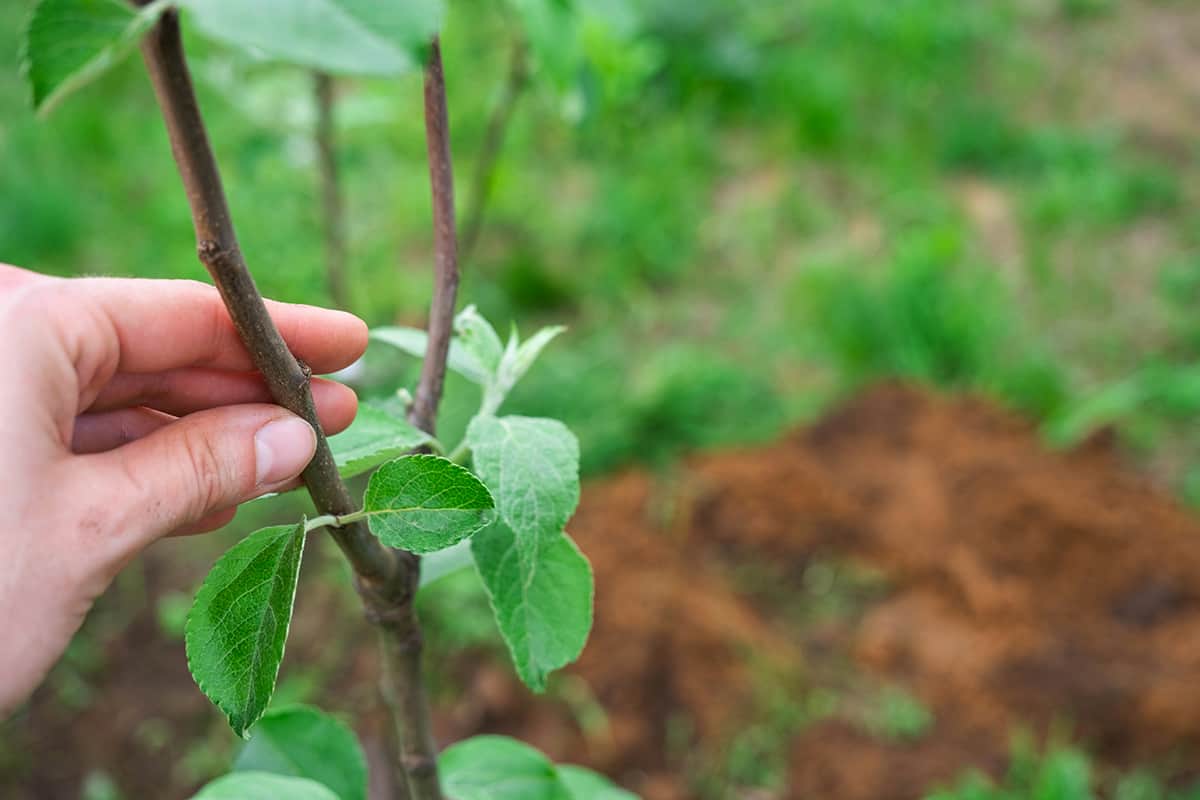
Step-by-Step Planting Guide
Choose a dwarf or semi-dwarf apple tree variety for pot planting, ensuring you have a large enough container. The ideal container should be at least 18 inches in diameter and the same in depth. Prepare a well-draining potting mix with a mixture of 50% garden soil and 50% compost. Fill your pot with this mix, leaving about 2 inches of space at the top.
Make a hole in the center of the mix, and it should be about the same depth as the height of the root ball. Before placing the apple tree into the hole, prepare the root ball according to the following guidelines.
Root Ball Preparation
Gently remove your apple tree from its initial container. Carefully loosen the roots on the outer surface of the root ball to help them grow freely. When the roots look uniform and relaxed, place the tree into the hole you created in the potting mix. The tree trunk’s base should be slightly above the soil line.
Hold the tree in the correct position and gradually fill the hole with your potting mix. Firmly press down the mix around the roots to eliminate air pockets. Once the hole is completely filled, water your apple tree thoroughly to allow the potting mix to settle. Provide additional potting mix if necessary, ensuring the tree’s base remains above the soil level.
Watering and Humidity
Watering Schedule
When growing apple trees in pots, it’s essential to have a consistent watering schedule. Water your potted apple tree regularly, ideally once every few days or when the top inch of soil feels dry. More importantly, ensure the soil is well-draining to prevent root rot and other issues.
Keep in mind that smaller pots dry out faster than larger ones. Monitor the moisture levels and adjust your watering frequency accordingly. In hot weather, you might need to water your apple tree more often, while during cooler months, your watering schedule might decrease.
Maintaining Proper Humidity Levels
Aside from regular watering, you should also maintain proper humidity levels for your potted apple tree. Aim for a humidity level of around 50% to 60%. You can create extra humidity by placing a tray of water with pebbles underneath the pot, which helps prevent the pot from sitting directly in water. As the water evaporates, it increases the humidity around the tree.
If you live in an area with low humidity, consider using a humidifier near your potted apple tree, but don’t directly aim it at the tree. Maintain good airflow to discourage disease growth and mimic the natural conditions for apple trees.
Sunlight and Temperature Control
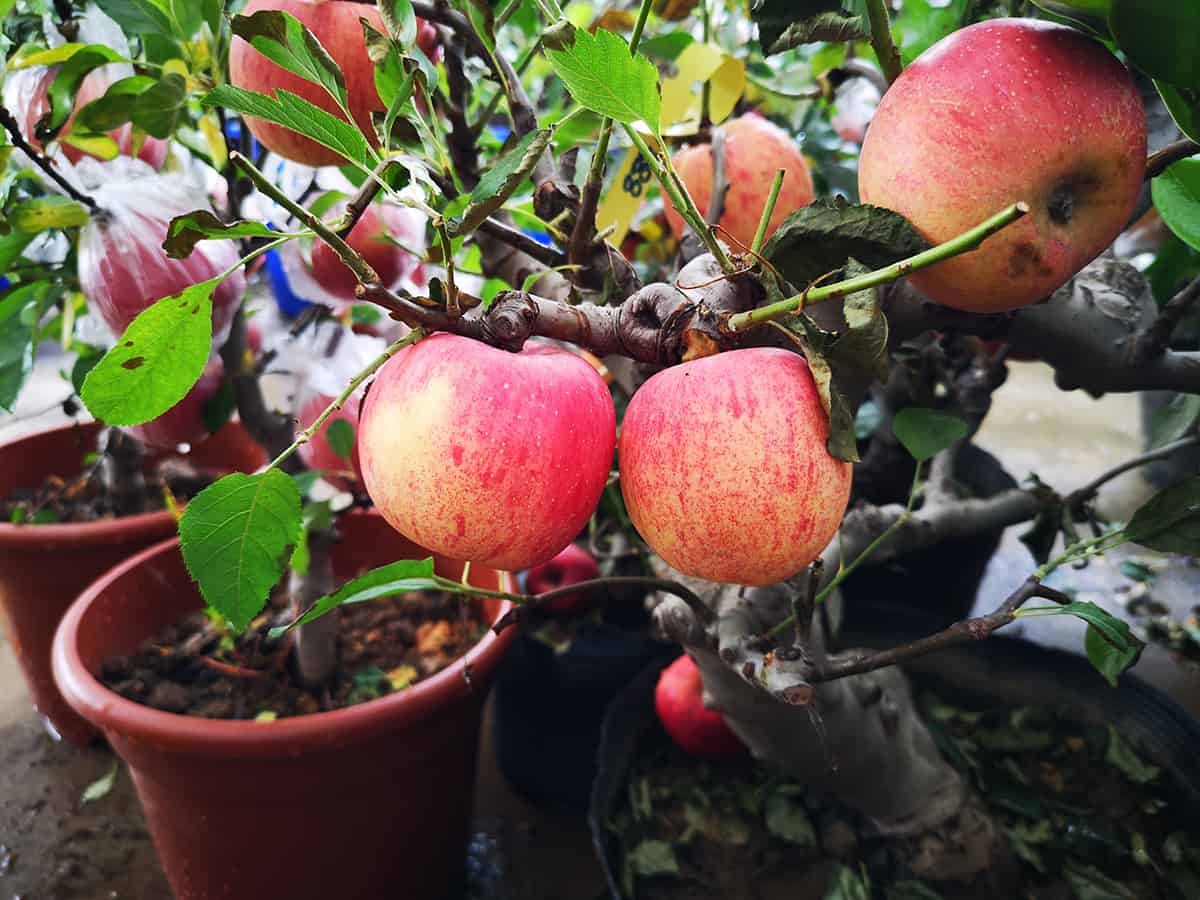
Sunlight Requirements
The key ingredient for growing apple trees in pots is sunlight. To ensure successful apple tree growth, place your potted trees in a position where they receive at least 6 to 8 hours of direct sunlight per day. Trees that don’t get enough sunlight won’t produce fruit and will have weaker growth.
Place your apple trees near a south-facing wall or a window that allows maximum exposure to sunlight. If you’re unable to provide enough natural light, consider using grow lights as an alternative to supplement natural sunlight.
Temperature Optimization
Besides sunlight, temperature also plays an important role in apple tree growth. During the growing season, maintain the temperature around your apple trees between 60-70°F (15-21°C). In the dormant period, apple trees generally prefer cooler temperatures, around 32-45°F (0-7°C).
Monitor the temperature and avoid exposing your trees to extreme changes. If you live in a region with a colder climate, move your potted apple trees to a protected space when the temperature starts to drop, such as indoors or in an unheated garage. Also, make sure your potted trees have proper drainage to prevent root rot and to maintain healthy growth.
Pruning and Maintenance
Pruning Techniques
When growing apple trees in pots, it’s essential to prune them correctly to promote healthy growth and fruit production. Start by removing dead, diseased, or broken limbs first. Next, get rid of water sprouts, which are shoots growing straight up off lateral branches. Proper pruning also helps manage the tree’s shape and size, making it suitable for container growth.
For young apple trees, prune immediately after planting. If you have a branchless whip, cut it to a height of 30 inches just above a bud. This encourages a central leader and lateral shoots to develop on the upper part of the trunk. When pruning throughout the year, ensure to make clean cuts and avoid damaging the bark.
Pest and Disease Management
Pests and diseases are common issues when growing apple trees. To tackle them, it’s crucial to monitor the tree regularly and take appropriate action. For pest control, you can use insecticidal soap or horticultural oil. Neem oil, for instance, is an effective treatment for various pests affecting apple trees. Apply these treatments according to the product’s label instructions and your tree’s needs.
Besides pests, diseases like apple scab, powdery mildew, and fire blight can affect your apple tree. To manage these diseases, ensure proper air circulation around the tree, remove any infected leaves, and apply appropriate fungicides or bactericides. It’s also crucial to maintain a clean environment around your potted apple tree, as this helps prevent the spread of pests and diseases.
Pollination Tips
Cross-Pollination Methods
Choosing the right apple tree varieties is essential for successful pollination. Ensure you pick compatible cultivars that can easily cross-pollinate each other. Dwarf apple trees are a great choice for pot cultivation. To enhance cross-pollination, place pots with different apple tree varieties close together. This proximity makes it easier for pollinating insects or the wind to transfer pollen.
Transferring pollen by hand is another option. Using a small paintbrush, collect pollen from the stamen of one tree and gently dust it onto the pistils of another tree. Repeat this process for each tree’s blossoms. This ensures successful cross-pollination, even in confined spaces like a balcony or patio.
Attracting Pollinators
Attracting pollinators to your potted apple trees increases the chances of fruitful yields. Bees are the primary pollinators of apple blossoms. Encourage bees by planting flowers rich in nectar and pollen near your potted apple trees. Flowers like lavender, borage, and marigolds are attractive to bees.
Moreover, avoid using harsh chemicals and pesticides in your garden. These can deter or harm pollinators. Opt for organic pest control methods to maintain a pollinator-friendly environment. Remember, a healthy ecosystem encourages better pollination and higher apple yields in your potted trees.
Harvesting and Storing Apples

Harvesting Indicators
Knowing when to harvest your apples is essential for optimal taste and storage conditions. Pay attention to the fruit’s color, as it tends to become more vibrant as they ripen. Gently lift the apple and twist it. If it comes off easily, it’s ready for harvest. Avoid pulling, as this might damage the tree or the fruit.
Storage Guidelines
Once you’ve harvested your apples, proper storage is crucial to maintain their quality and freshness. Apples should be stored in a cool (34-40°F), humid (90% RH), and dark place. A refrigerator fits these criteria, but a root cellar or unheated garage can also work. Remember to keep your apples away from strong-smelling foods, as they can absorb odors and impact the taste.
For small quantities, storing apples in perforated plastic bags in the refrigerator can reduce respiration and extend their lifespan. On the other hand, if you have a large quantity of apples, proper storage becomes even more crucial, as it prevents spoilage and wastage. Be sure to inspect your apples regularly and remove any that show signs of decay to prevent it from spreading to the rest of the batch.
Frequently Asked Questions
Which types of apple trees are most suitable for pot cultivation indoors?
Spur-strain apple trees are ideally suited for limited spaces like indoor pot cultivation. Compact growth allows them to adapt better to container environments. Choose dwarf or semi-dwarf varieties that are self-pollinating or choose two compatible varieties for cross-pollination.
How should one feed and fertilize apple trees grown in pots?
Feed your apple tree with a balanced, slow-release granular fertilizer during the early spring. Additionally, apply a liquid fertilizer designed for fruit trees every 4-6 weeks during the growing season. Keep an eye on the leaf color and growth rate; if the tree appears unhealthy, adjust the feeding schedule accordingly.
How can potted apple trees be protected and cared for during winter months?
Move your potted apple tree to a sheltered location like a garage or shed during the winter months to protect it from extreme temperatures and harsh winds. Alternatively, insulate the pot with straw, bubble wrap, or a specially designed pot cover. Continue to water the tree, but reduce the frequency as the tree will be in a dormant period.
After planting, how long does it generally take for an apple tree in a pot to start bearing fruit?
Dwarf apple trees typically start bearing fruit 2 to 3 years after planting. The time to fruit-bearing may vary depending on the specific variety and the care given to the tree. Make sure to provide the necessary growing conditions to encourage healthy growth and fruit production.
